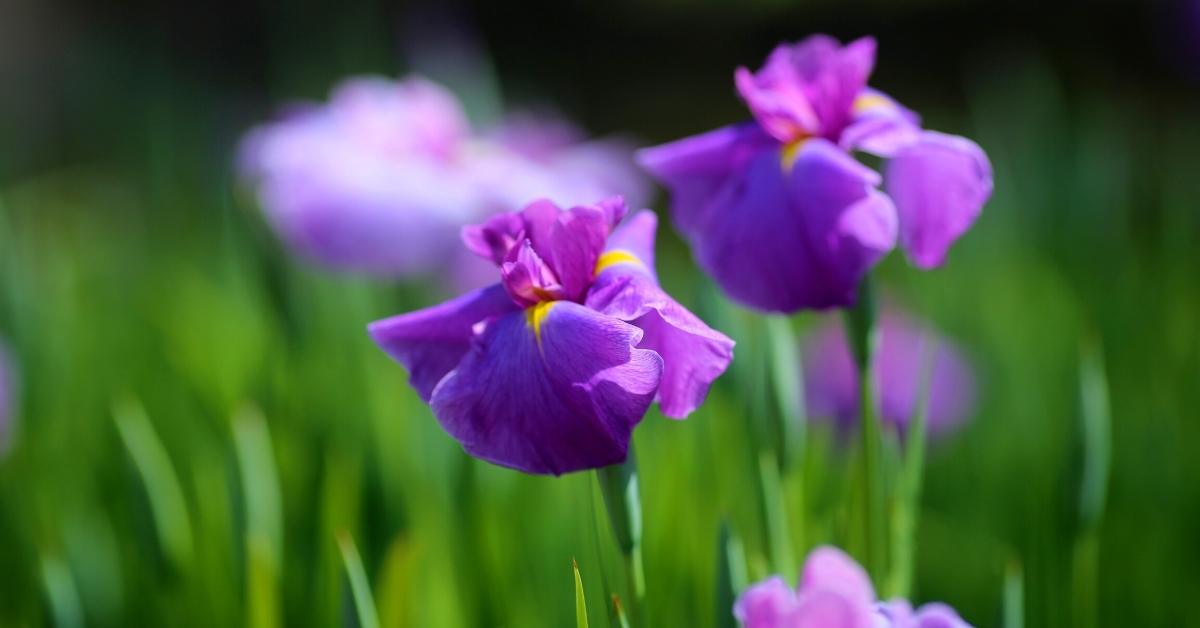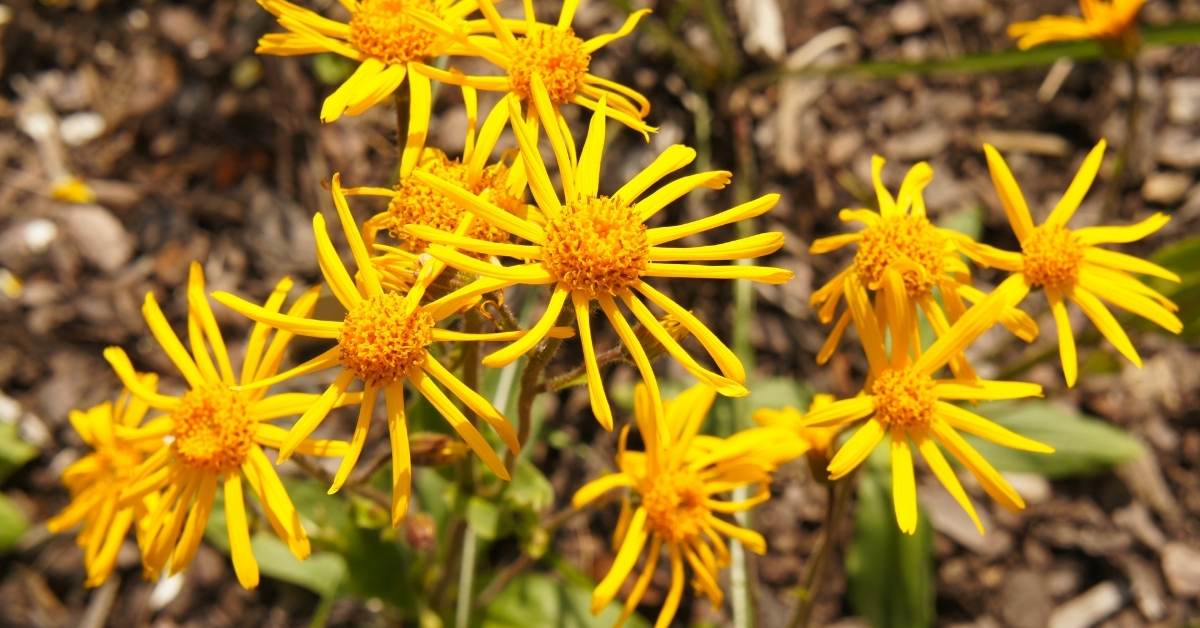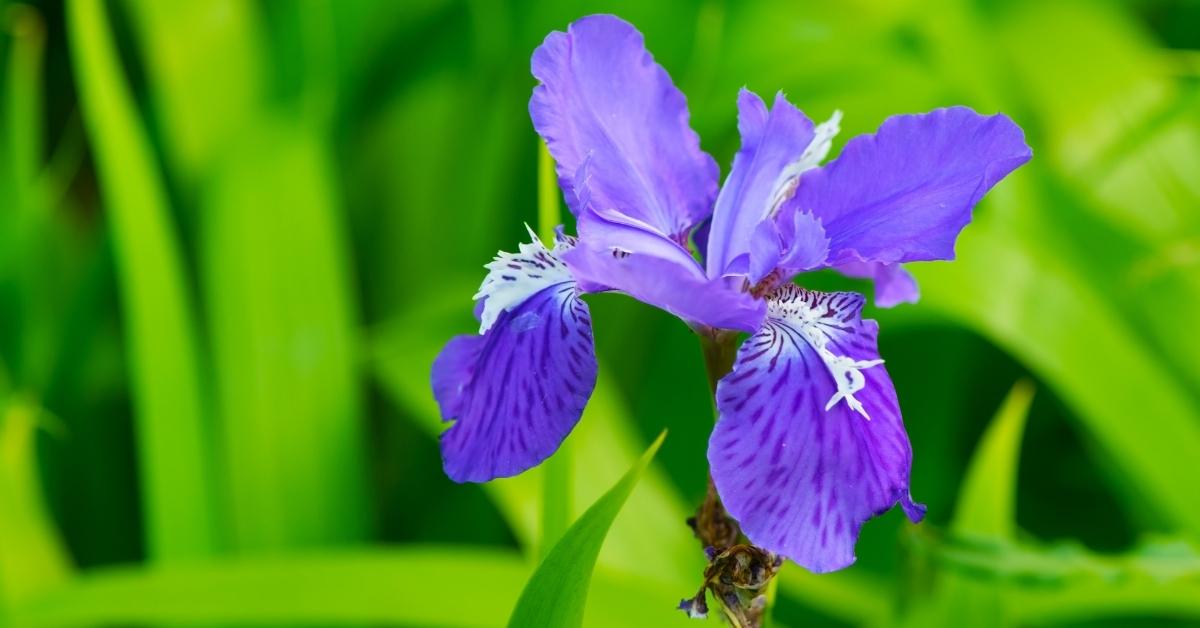Growing Japanese iris (Iris ensata) in a domestic setting necessitates the precise amalgamation of multiple key factors, each bearing significance in achieving optimal outcomes. By astutely orchestrating this harmonious convergence, gardeners can attain remarkable success, even in the climatic conditions of USDA Zone 4, as the Japanese iris exhibits commendable hardiness, withstanding and thriving in challenging environments.
Japanese Iris Growing Conditions
Japanese iris thrives in specific environmental conditions. They prefer full sun to partial shade, although some varieties may tolerate more shade. It is important to provide well-draining soil that is rich in organic matter. Maintaining a slightly acidic soil with a pH range of 5.5 to 6.5 is crucial for its optimal growth. Regular soil testing and amendments can help achieve the desired acidity level.
It demands acidic soil for long-term success. When I grow it in containers on the side of the pond, I generally grow it in straight peat moss. In the bog garden, I amended the soil to 50:50 peat and soil to get that acidity level dropped down. If you don’t use acidic soil, you’ll find the plant will fail to thrive.
It wants a great deal of moisture. There’s little point in trying to grow this plant in the dry, sunny garden as you would any other iris. This is a plant of the bog. I have had the best success with this plant when I grow it very wet in the spring and allow it to dry out a little in the fall (still damp but not water-logged)
Planting Depth and Spacing:
When planting Japanese iris, ensure that the rhizomes are positioned just below the soil surface, with the top exposed. This allows the plant to receive adequate moisture and airflow. Proper spacing between plants is important to avoid overcrowding, typically around 18 to 24 inches apart. Adequate spacing encourages good air circulation and prevents the spread of diseases.
Fertilization and Nutrient Requirements:
Japanese iris benefits from regular fertilization to support their growth and blooming. Use a balanced slow-release fertilizer specifically formulated for perennials in early spring. Follow the package instructions for proper application rates. Additionally, incorporating compost or well-decomposed organic matter into the soil during planting or as a top dressing helps enrich the soil and provide essential nutrients.
Mulching and Moisture Retention:
Applying a layer of organic mulch around the base of the Japanese iris helps conserve moisture, suppress weed growth, and regulate soil temperature. Organic mulches, such as shredded bark or straw, should be spread around but not directly touching the rhizomes. Adequate moisture is crucial for Japanese iris, especially during their active growth and blooming periods. Regular watering, ensuring the soil remains consistently moist but not waterlogged, is essential for their health and vitality.
So for best success, combine damp soil with an acidic one.

Bloomtime
The bloom time of the Japanese iris is a fascinating aspect that can be enhanced with appropriate care. As the spring season emerges, applying a shovel of nutrient-rich compost serves as an ample source of nourishment to sustain their blooming journey throughout the enchanting month of July.
Notably, the flowers of Japanese iris captivate with their generous proportions, boasting some of the largest blooms among their iris counterparts. While these exquisite blossoms may possess a subtle fragrance, it is worth noting that some varieties may not exhibit a discernible scent at all. Additionally, it is important to bear in mind that Japanese iris blooms do not showcase a repeat performance, refraining from gracing your garden once again, even if their foliage is meticulously trimmed back.
Propagating Japanese Iris
I divide mine in the spring or fall (mostly spring).
The propagation of Japanese iris offers gardeners the opportunity to expand their collection and cultivate new plants. Dividing established iris clumps serves as a common and effective method, typically carried out in the spring, although fall division is also viable. By carefully separating the rhizomes, each containing its own growing points, gardeners can establish new plants that will flourish and bloom.
Another approach to propagating Japanese iris involves starting them from seeds, which develop in pods during the late summer. To begin this process, sow the seeds in early spring, treating them similarly to other perennial seeds. While the germination of Japanese iris seeds may initially resemble grass growth, it is important to remember that they have distinct characteristics.
Creating suitable conditions for germination entails providing acidic soils and maintaining moist conditions. With proper care, the seeds should successfully sprout and develop into vibrant iris plants, ready to grace the garden with their captivating blooms.
By employing these propagation methods, whether through division or seed sowing, gardeners can continue to expand their Japanese iris collection, ensuring a diverse and flourishing display of these remarkable plants.
Overwintering Japanese Iris
When it comes to overwintering Japanese iris in USDA zone 4, there is no need for elaborate measures. Simply cutting back the foliage suffices as the primary action for winter preparation. By removing the spent foliage, you help the plant redirect its energy toward essential root development and conservation during the dormant season.
This straightforward practice ensures the resilience and well-being of your Japanese iris as it navigates through the winter months, ready to emerge with renewed vitality when spring graces the garden once again.
Rejuvenation
The process of rejuvenation plays a pivotal role in maintaining the vigor and vitality of Japanese iris plants. A recommended practice is to consider dividing the plants every 3-4 years, as this contributes to a revitalized enthusiasm for flowering. Through the act of division, the plant’s energy is redirected, allowing for renewed growth and increased flower production.
By carefully separating and transplanting the iris clumps, gardeners create an opportunity for the plant to thrive in a refreshed environment, promoting healthier root development and ultimately fostering a renewed sense of vigor that translates into an enhanced flowering display.
Japanese Iris Problems
Like other iris varieties, the Japanese iris is susceptible to occasional infestations of Thrips on their flowers. However, fret not, as effective control measures can be implemented to address this issue. The utilization of insecticidal soaps proves valuable in managing Thrips, while the strategic placement of blue sticky traps adjacent to the iris beds serves as an additional preventative measure. These traps attract and capture the Thrips, minimizing their population and mitigating potential damage to the flowers.
In order to ensure the successful growth of the Japanese iris, two fundamental factors require careful attention. Firstly, it is imperative to maintain the correct soil acidity levels, as these plants thrive in specific pH ranges. Regular soil testing and appropriate amendments allow for optimal pH conditions to be achieved, fostering an environment conducive to robust growth and blooming. Secondly, providing sufficient moisture is essential.
Consistent watering practices, considering both the frequency and depth of irrigation, play a crucial role in supporting the overall health and vigor of the Japanese iris. Failure to meet these essential requirements can impede the plant’s growth and diminish its potential, rendering the efforts and resources invested in cultivating them futile. By diligently adhering to these critical considerations, you ensure that your endeavors with Japanese iris are fruitful and rewarding.
When is the best time to plant Japanese iris?
The ideal time to plant Japanese iris is in the late summer to early fall or in early spring. These periods allow the plants to establish their roots before the onset of extreme weather conditions. However, they are generally adaptable and can be planted during other seasons as long as proper care is provided.
How often should Japanese iris be watered?
Japanese iris prefers consistently moist soil, especially during their active growth and blooming periods. Watering frequency depends on various factors, such as weather conditions and soil moisture retention. As a general guideline, aim to provide deep, thorough waterings once or twice a week, ensuring the soil remains evenly moist but not waterlogged. Mulching around the plants can help retain moisture and reduce watering frequency.
Do Japanese iris require any special care during winter?
Japanese iris is generally a hardy plant, especially in USDA zones 4-9. While they can withstand colder temperatures, it is beneficial to provide some winter care. In late fall, after the foliage has died back, you can cut it back to a few inches above the ground. This helps divert the plant’s energy to the roots and prevents the foliage from becoming a potential site for diseases. Applying a layer of mulch around the base of the plants can also help protect the rhizomes from extremely cold temperatures.


